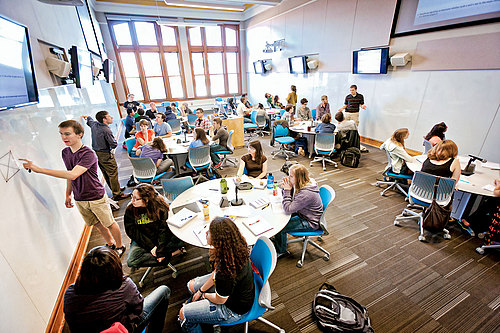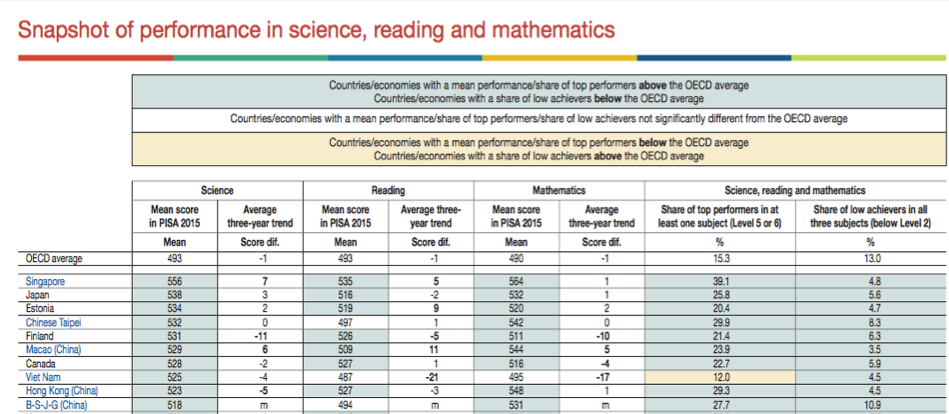One-on-One with Jaspal Sidhu, Founder and Chairman of the SIS Group of Schools.
By: Shoeb Kagda, Founder Indonesia Economic Forum
IEF: Education is the core to a nation’s future. Education not only develops a nation’s economy and society but also shapes the personality of its youth. It provides the basis of intellectual growth as well as builds character and values. As such, a good education is more than just an economic investment. It is an essential input upon which life, development and ultimately the survival of the individual depends on. Given this context and given your deep and long experience in the education sector, what are the key factors that are shaping the future of education in Indonesia and the region?
JS: I have been in Indonesia now for more than 29 years and I have seen Indonesia from the inside, being involved in education for a very long time. I think there are several factors. Let me look at two here, that will shape Indonesia’s education terrain.
One is the government itself. What is its view on education, what are the action plans that are going to happen? On a positive note, President Jokowi’s education budget is very generous – 20 percent of the whole government budget is very encouraging. Now the big question is, how much of that budget will actually shape the current curriculum to be one of the 21st century teaching and learning? That is extremely important. Number two I think is having well-trained teachers. In emerging economies like Indonesia, I am not so sure that the teaching profession has enjoyed a high status. In Singapore it’s different. In Singapore and Hong Kong, teachers are drawn from the top 30 percent of school leavers. In South Korea and Finland, they are drawn from the top 10 percent.
IEF: Now one of the key issues for teachers, of course, is teacher training. There has been a lot of talk about how there is a lack of teacher training in Indonesia. Do you think that is an issue?
JS: I think its not the lack of training but the kind of training that is offered. And to be fair, I think this whole training terrain itself is facing some challenges because, what do you train? How do you train when you don’t know what tomorrow is going to look like? So, I think the teachers and the trainers are going to struggle with this. Indonesia has 55 million students, about 3 million teachers, and about 240,000 schools.It is the fourth-largest education system in the world. I think what is clear is that it cannot carry on with what it is doing right now. The World Bank statistics show that if you take a whole class time, 75 percent of the time is spent with the teacher doing most of the talking. That has got to change.
IEF: So, do you see that already happening?
JS: I see it happening, I see that it’s happening in progressive schools, but I think it’s going to take time for these things to develop, but its encouraging.
The third factor is technology, that’s the whole big animal altogether right? Some students are far more savvy here than their teachers. They probably know far more about technology and their teachers are struggling. How do you use that technology appropriately in class and not use technology to replace the teacher?
Lastly, the education tradition that people don’t talk about is parents. I think many somewhat disconnected here —though they are beginning to get in—parents need to be part of the journey and I hope that they will continue to do that.
IEF: Is the lack of parental involvement a cultural thing or is it more a systemic thing where in the past schools haven’t engaged with parents?
JS: World Bank statistics say about 40 percent of the parents, and this is Indonesia-wide, have only met their child’s teacher maybe once or maybe never. In fact, 95 percent have not even volunteered in classroom activities. To be fair, it could be a case of both of them working, so it could be distance being an issue. It could also be a case of language. The schools could be speaking in English and the parents may not understand what’s happening. So I think it’s a few factors at play but the responsibility must lie on the schools. How do you engage with the parents? And these are the questions that I ask my own team also, “Come up with new ideas!” Technology is great tool for you to engage with parents, but I think that if they can crack that this challenge, we are going to see big changes in this country.
IEF: That is very interesting insight. In terms of where the entire education sector is heading, everyone talks about how we are in the midst of an industrial revolution; industry 4.0, everyone talks about EduTech. What will the education industry look like in 10 years’ time? Do you think today’s classrooms will survive and whether we will have wall-less classrooms going forward?

JS: I think we are going to see three changes.
One – learners will have choices. With technology, students will be able to decide what they want to learn, they will be able to decide when they want to learn, where they want to be sitting and learning, and from whom they want to learn. The fact that our students and our learners will get choices is a huge, huge change in the education terrain.
Number two, I believe learning will become more fun and personalized. This whole concept of gamifying education is going to inspire students, it’s going to make teaching and learning exciting. I think we are going to see the gamifying of education as one big industry development right there. But I also believe that with technology children can learn at their own pace. The average student can take his or her time, the one who is better, academic stronger I think there is enough technology to push him or her further. So it will be very personalized.
The third area that education will shift towards will be “project-based learning,” I think schools that don’t bring project-based learning into their program, I would say, are not progressive. 21stcentury skills are what I call P.A.C.E. Perseverance, Analytical Thinking, Collaboration and Communication, and Entrepreneurism. These skills can come quickly from project-based teaching. Not so much of standing in front of the classroom and lecturing them.
IEF: And are you already starting to implement some of these concepts and ideas into your schools?
JS: Our curriculum is Singapore-based, and Singapore is ranked number one in OECD PISA rankings, right? It is a progressive curriculum. The Singapore government spends billions of dollars on R&D, so it is an evolving curriculum. The program that we put into our schools is 21stcentury-based and with that we ensure that we have the right teachers who will be able to execute that.

IEF: Education is, of course, a trillion-dollar economy. There are many changes going on in education today. What do you think is going to happen? And how is education going to adapt to the 4thIndustrial Revolution?
JS: You are right education is a trillion-dollar economy. According to McKinsey and Co, by 2030 Indonesia will see 90 million people entering the consumer class, this will be a very young population, right? McKinsey also said that with this group coming in, the education industry will be worth US$40 billion in Indonesia.
IEF: That is a significant chunk.
JS: Conferences where I speak at, I talk to impact funds, I talk to development banks, and I talk to private equity funds and I tell them that this is the time to come to Indonesia. You have to invest in education: one because it is financially attractive, number two it will make an impact as the country needs 100 million skilled workers by 2030. Where are you going to get them? You are only going to get them from the schools, from the education institutions.
IEF: But this process has to start from the lower levels?
JS: It needs to start from the lower levels as the foundation needs to be there. And I worry because a lot of people go right straight into the upper end of the education system. Yes, you need them quickly, but the whole mindset, the whole cultural change usually comes in during the early years and I think that is what we are strong at, that is what education will move towards and that’s how teacher training should also evolve.
IEF: You are in an interesting position because you are an educator, you own a group of schools but you are also a businessman and you need to ensure that the schools are financially viable. Are you seeing that investor interest in the education system here is heating up? Is it getting more recognition of the potential opportunities?
JS: I think there’s a lot of interest in Indonesia. It’s the fourth most populous country in the world. There is a middle-class that’s coming up, people are interested in education. But in Indonesia, outside the four or five largest cities, the affordability starts dropping. Everyone is packed and cramped into the main cities and it is very competitive. New players who want to come into education are getting into a saturated market. So here it becomes an acquisition type of opportunity. We feel that the opportunities really exist in tier-B, tier-C cities, and if you understand the SIS model that is what I am trying to create.
My children had the privilege to go to a private school which back then cost US$25,000 a year, per child. I halved that to US$15,000 when I started the Singapore International School. Then I halved the US$15,000 to US$7,000 a year, and we established several such schools here in Jakarta. Soon I halved that US$7,000 to US$4,000 a year and I opened schools in cities like in Medan, Semarang, and Cilegon. And recently I halved US$4,000 to US$2,000 a year as we plan to put those two thousand-dollar schools right across the other cities, and the interest is amazing.
IEF: But even as you halved the cost of such schools, how did you maintain the standard of teaching, the standard of education?
JS: I think we have to get our mindset away that the lower the fees, the quality goes down. That’s not correct. My friend from the World Bank said the best school he saw in Africa was under a tree. So it is about the teacher, less about the facility.As we reduce the school fees we look at three things. We look at, location; Are we placing the schools in the right catchment area? Two: will it be financially sustainable, and scalable? And number three, what is the measurable impact that we will create? In terms of where we want to place these schools, we got a study done where we have laid out the number of cities we can target.
I am very focused, in terms of making the school financially sustainable and frankly, providing fair returns to the investors. The problem always lies in land issues. How do we factor land costs in? And here we think working with the real estate developers, family offices who have land banks, and even with the government. Why can’t I put the school on government land and declare that I’m going to bring 21stcentury teaching and I’m going to help public school teachers? We can form that partnership. So I think PPP (public-private-partnership) needs to sort of mould and change in this country.
IEF: In a way it’s a paradigm shift in terms of how schools are built and operated. Beyond that, what are the key challenges for educators today?
JS: One is technology. I repeated this and I am repeating it. I think educators are really struggling with technology. They don’t know how to use technology. I have gone into schools, they have one projector and they have a smartboard, and they think they have technology. They ask the students, “Ok now stop, let’s look at the video,” and that is the end of that use of technology there. I think they are struggling to see how technology can work with them in the classroom. Number two, they need to re-define the whole value proposition or what they’re doing in classrooms. And I go back to this whole thing of “how do you teach when you don’t know what the challenges are there tomorrow?” And here I feel schools need to work closely with industries. I think if industries, CEOs, people out there can come into schools and show teachers what is happening outside we are going to see a mindset shift among teachers.
IEF: Do you have any interesting ideas or thoughts about how you can bring industries and employers into the education system?
JS: So I have been thinking about this. To just say that schools must have a closer working relationship with the industries is a general statement. I’m an engineer, I need concrete solutions. So I feel that here are some ideas that people can think about. One, bring industry players onto your school board. We must bring in the likes of Nadiem Makarim, the founder of Go-Jek and Pandu Shahri, a digital entrepreneur as both are well known.
I have these kind of individuals on my board. So they can share with the teachers what’s happening out there.
Second is a point that may ruffle some feathers but I’ll bring it up anyway. We talk about students doing internships. How about letting teachers do internships? Let a teacher spend a month in Go-Jek and let her see and feel what the industry needs. So may say “Oh my goodness, I need to go back and re-do several things in class.” I believe if the teachers can shift their thinking around teaching and learning we are going to see a massive impact in a few years.
IEF: Given today’s fast moving knowledge economy and the rise of digital natives, what is the role of education in terms of imparting information and knowledge?
JS: Whatever you want a child to know, the child and can find out on Google. So let’s just understand that. So this means you could technically say there’s nothing for me to teach because the child actually can pick it up from the internet. Which brings me back to the question, then what do these educators need to do? I feel they need to be less of a teacher but more of a mentor. They need to help students understand, how do you conduct research? How do you analyze and interpret data? How do you know what’s fake news? What is the veracity of that information? How do you make ethical judgments? Google is not going to teach you all this. And how do you use the data to creatively solve problems around you? How do you collaborate? The child can say, “I’ve got something from Google, you’ve got something, let’s sit down and collaborate.” That’s what the education system needs to shift to. It’s a big shift, I must say.
IEF: So then how do teachers prepare themselves for this new coming age?

JS: I’ve been asked that question at conferences, I’ve been asked that question by parents, and I think everyone deserves a very clear answer, and that’s the engineer in me talking. In this digital world, where teachers and students are trying to work together, the missing factor is “connection.” A teacher must connect with his or her student. And only when you connect, are you going to see an improvement in student outcomes.
So let’s talk about these things called connections. I feel a great educator needs to be an E.F.F.E.C.T.O.R. It’s a word I coined and you won’t find a definition of ‘Effector,” in a dictionary. Effector means, in my mind, someone who makes a positive effect on someone else’s life; someone who is Earnest, Funny, Firm, Enthusiastic, Consistent, is always on Time, has an Open mind and is a Researcher.
End

